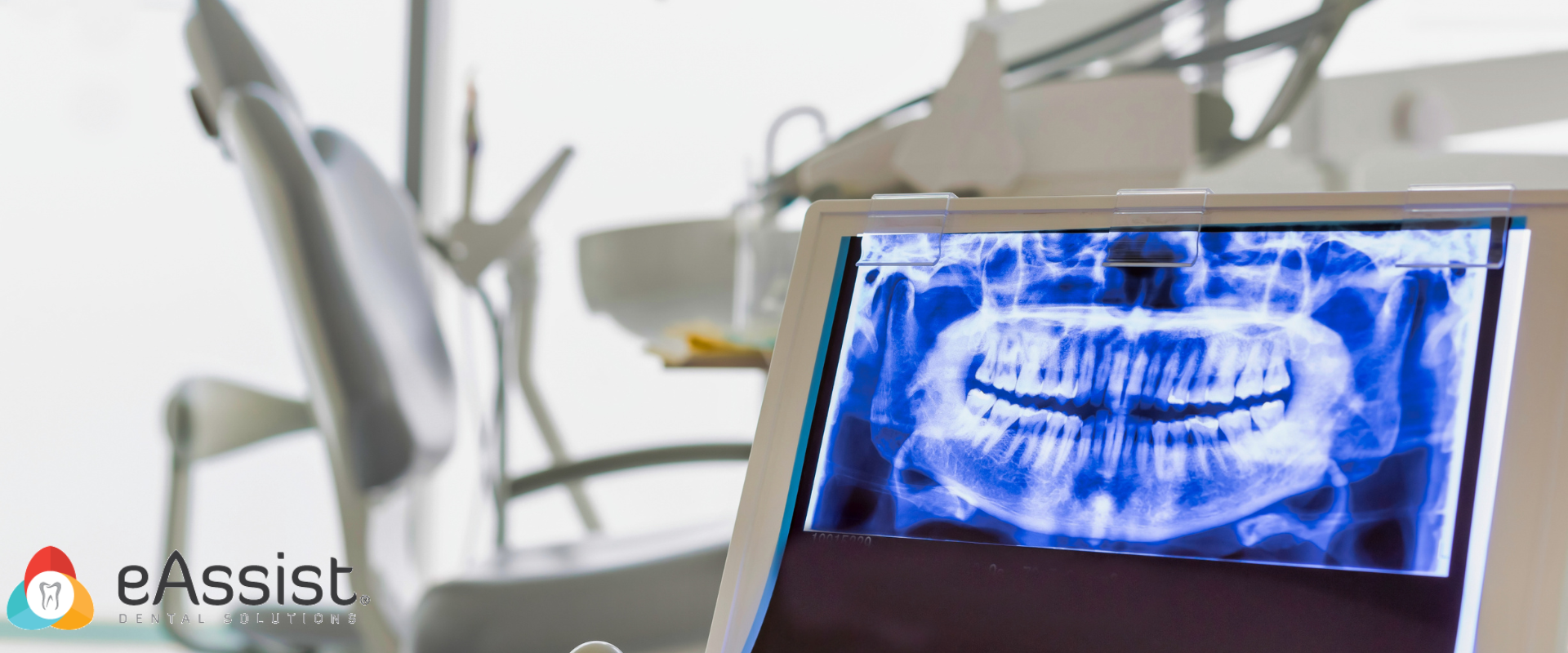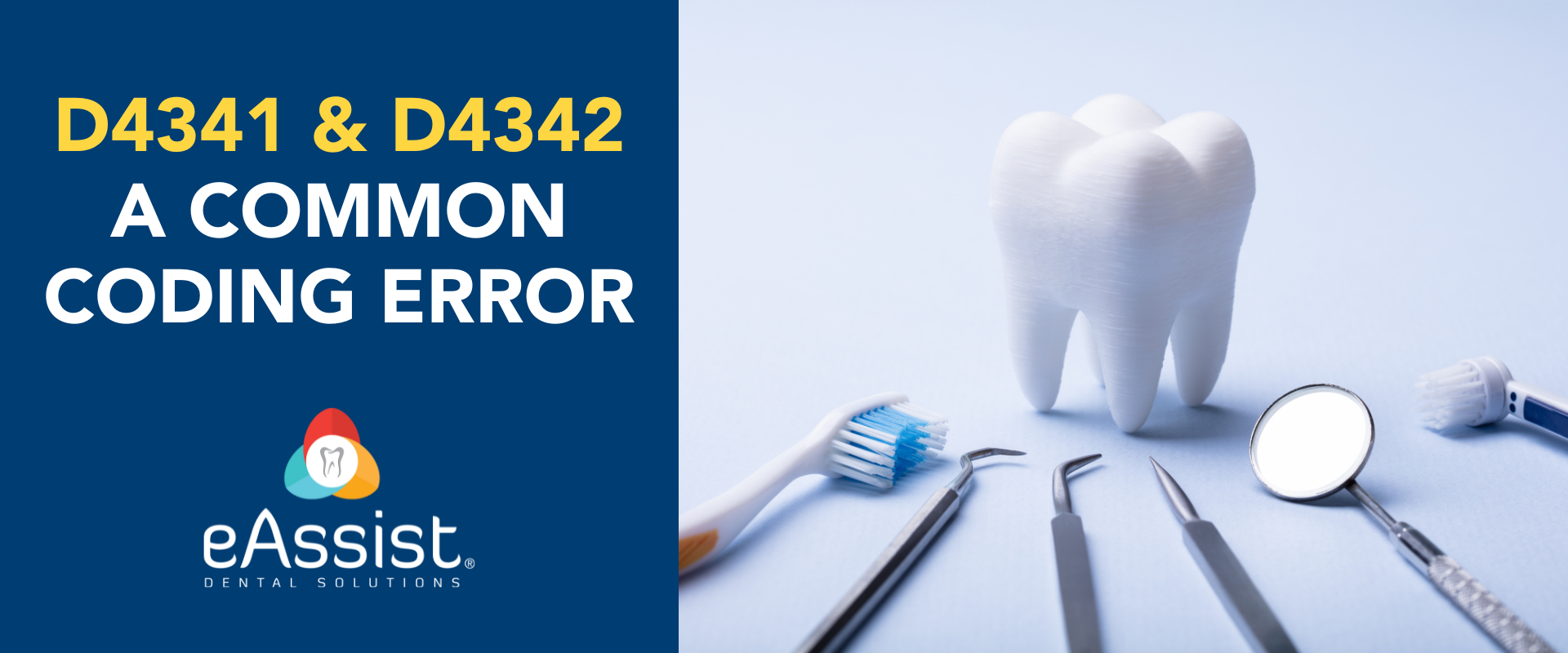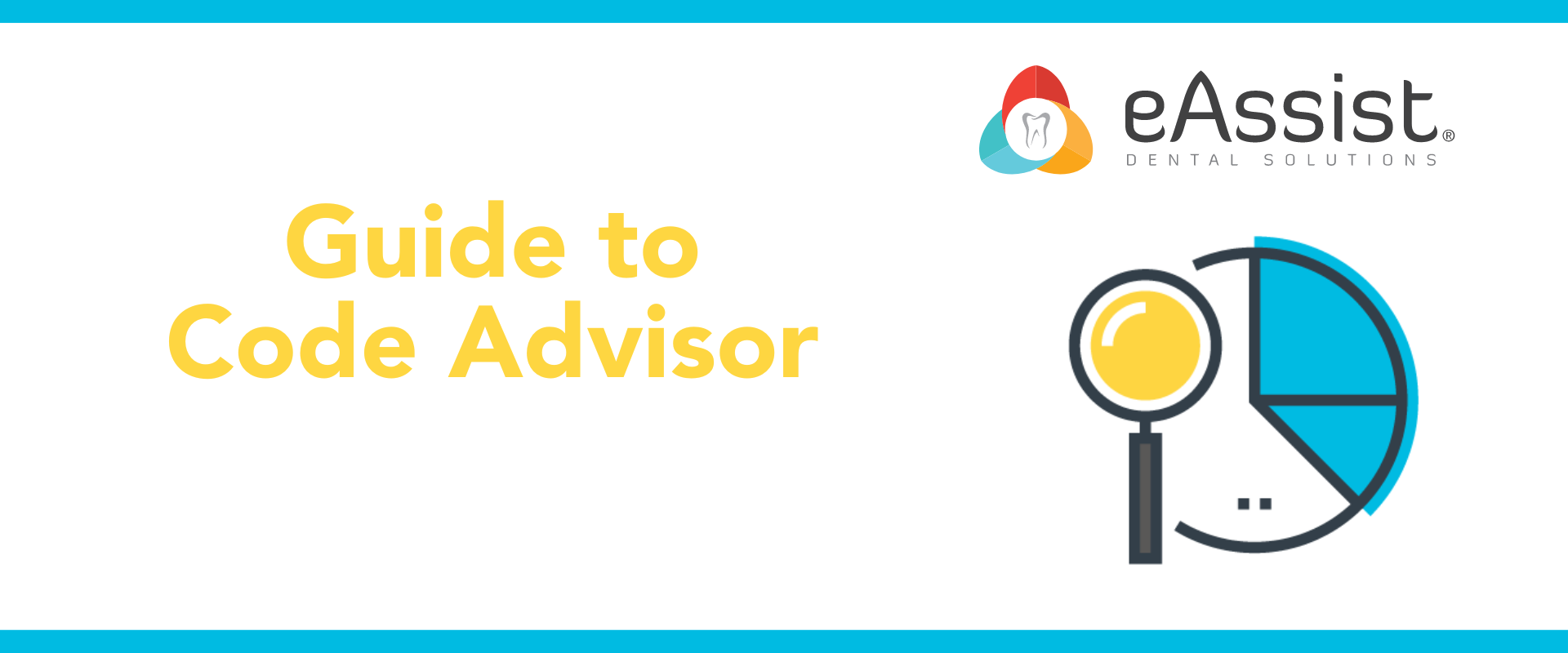When it comes to dental coding, things are ever-evolving. In fact, 16 code changes are coming in 2024 so it’s no surprise that a common reason for dental denials is incorrect coding. In this ongoing series, we discuss common coding errors, this time focusing on D4341 & D4342.
What is the difference between D4341 & D4342?
D4341 is the dental code for scaling and root planing, four or more teeth per quadrant and D4342 is the code for scaling and root planing, 1-3 teeth per quadrant. The only difference between the two is the amount of teeth involved in the treatment.
Are D4341 & D4342 specialty procedures?
Although scaling and root planing is a periodontal procedure it is not considered a specialty treatment as it’s non-surgical and can be completed by a dental hygienist. Therefore, no referral is needed if the patient has HMO insurance but certain plans (particularly Medicare and military) may still require it to be pre-authorized.
Is there a minimum pocket depth requirement for D4341 & D4342?
There is no official minimum pocket depth that defines scaling and root planing but each insurance carrier has a minimum that they will allow payment for. No carrier will cover any pocket depth less than 4mm with several now increasing it to 5mm or more. For D4341 this would require at least 4 teeth to meet this requirement whereas only 1 tooth needs to meet it for D4342. Each insurance company is different so it’s best to obtain their minimum requirements when verifying insurance.
In addition to a minimum pocket depth, insurance carriers also may limit the number of quadrants completed in one visit. Some carriers allow all 4 while others only allow only 2 and if any more are billed for the same date of service they will be denied. As this varies from carrier to carrier, you will need to clarify how many quads are covered per visit when verifying insurance. As this can take some time to confirm, consider outsourcing your insurance verification to free up your workload.

What should I remember when billing D4341 & D4342?
Most importantly, remember the insurance requirements when billing and make sure the pocket depths are met and the correct amount of quadrants are completed. Then, full mouth x-rays, a periodontal chart, and a clinical narrative must be attached to the claim. If you want to increase your chance of coverage, also include a panoramic x-ray, if available. Add as many details as possible to the clinical narrative and be sure to address the amount of pocket depth and any bone loss that applies.
What is the difference between billing D4341 & D4342?
When billing D4341 it’s important to list the quadrant in which the scaling and root planing was completed whereas when billing D4342 it’s important to list the specific tooth number. If D4341 is billed with a tooth number instead of a quadrant the claim may either be denied or paid at an alternate benefit downgrade of D4342. If D4342 is billed with a quadrant instead of a tooth number it may simply be denied. Always, double-check the amount of teeth involved in the treatment. If only 1-3 meet the pocket depth requirement, D4342 needs to be billed, if 4 or more do, bill D4341.

Why is the insurance company denying my claim?
Insurance companies have grown increasingly suspicious of upcoding when it comes to scaling and root planing which has led to an increase in denials. Considered a form of fraud, upcoding is applying a more expensive code to an inexpensive treatment (for example, charging coding treatment as scaling and root planing instead of prophylaxis). Because of this, they are requiring more proof that the treatment was truly needed in order to pay the claim. One item they’re increasingly asking for is the length of the appointment time. Scaling and root planing, especially on all 4 quads, is a long procedure and they are requesting the appointment length to prove this, so be sure to have it on file.
Another common reason for denial is no evidence of bone loss. Most insurance carriers require bone loss to be present for scaling and root planing to apply. When billing, be sure to provide this evidence. A narrative won’t suffice if the x-rays don’t support it so be sure to include both. A good rule of thumb is to enclose enlarged x-rays of the quadrants/teeth involved.
It’s also very common that the incorrect scaling and root planing code was applied. Count those teeth when billing. Remember, when 4 or more meet the pocket depth minimum it’s D4341 and when 1-3 do, it’s D4342. If you’re struggling with CDT codes, consider Coding with Confidence from Practice Booster, which is an all-encompassing guide to correct dental coding.
Whether it’s D4341 or D4342, scaling, and root planing is a detailed treatment that requires a significant amount of attention when billing. Because the two dental codes are so similar, it’s easy to confuse them, especially when you’re busy assisting patients and supporting dentists. If you want to avoid any confusion, consider outsourcing. At eAssist, our Success Consultants are knowledgeable about insurance guidelines and will ensure your scaling and root planing claims are billed correctly. To learn more, schedule a consultation here.






0 Comments